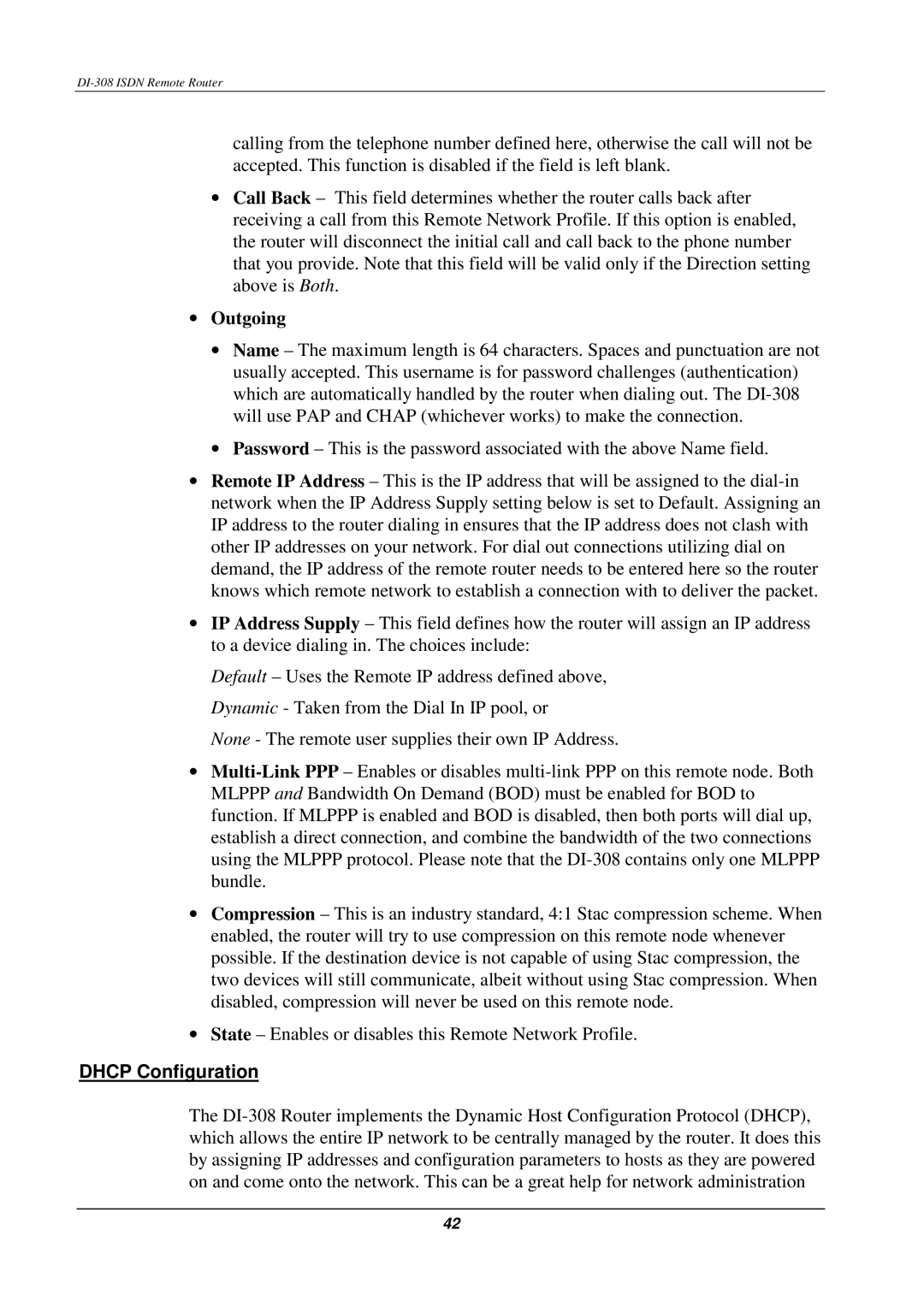
DI-308 ISDN Remote Router
calling from the telephone number defined here, otherwise the call will not be accepted. This function is disabled if the field is left blank.
•Call Back – This field determines whether the router calls back after receiving a call from this Remote Network Profile. If this option is enabled, the router will disconnect the initial call and call back to the phone number that you provide. Note that this field will be valid only if the Direction setting above is Both.
•Outgoing
•Name – The maximum length is 64 characters. Spaces and punctuation are not usually accepted. This username is for password challenges (authentication) which are automatically handled by the router when dialing out. The
•Password – This is the password associated with the above Name field.
•Remote IP Address – This is the IP address that will be assigned to the
•IP Address Supply – This field defines how the router will assign an IP address to a device dialing in. The choices include:
Default – Uses the Remote IP address defined above, Dynamic - Taken from the Dial In IP pool, or
None - The remote user supplies their own IP Address.
•
•Compression – This is an industry standard, 4:1 Stac compression scheme. When enabled, the router will try to use compression on this remote node whenever possible. If the destination device is not capable of using Stac compression, the two devices will still communicate, albeit without using Stac compression. When disabled, compression will never be used on this remote node.
•State – Enables or disables this Remote Network Profile.
DHCP Configuration
The
42
